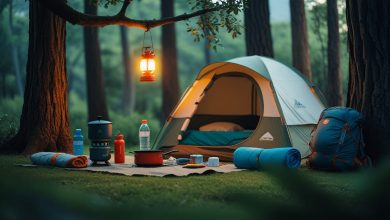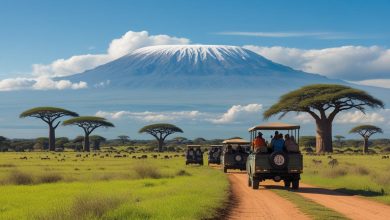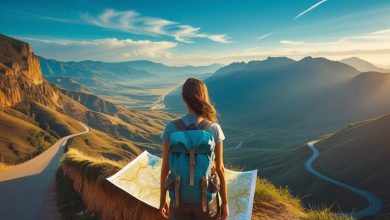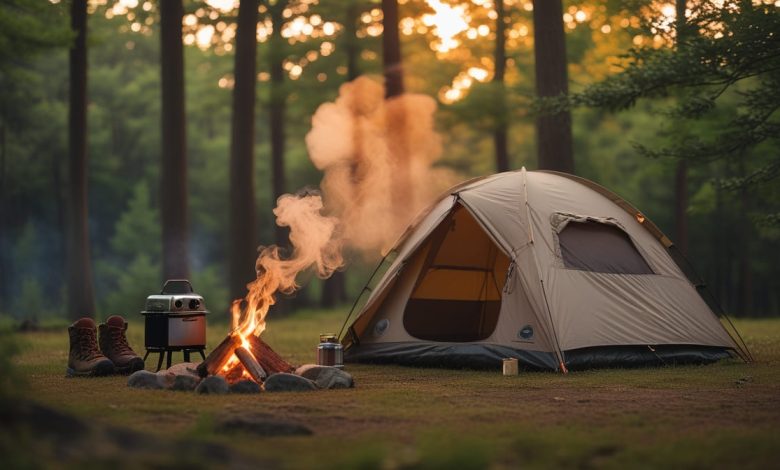
Planning a camping trip can be one of the most exciting parts of the adventure, but forgetting essential gear can quickly turn your outdoor experience into a nightmare. Whether you’re a seasoned camper or a first-timer, having a well-organized checklist is the key to ensuring a safe, comfortable, and enjoyable trip. That’s why we’ve created this Ultimate Camping Checklist—a comprehensive guide to help you pack everything you need for your next outdoor excursion.
In this article, we’ll cover everything from shelter and sleep systems to cooking gear, clothing, and safety essentials. We’ll also provide tips on how to choose the right gear, pack efficiently, and customize your checklist for different types of camping trips. Let’s dive in!
Why a Camping Checklist is Essential
Before we get into the nitty-gritty, let’s talk about why a camping checklist is so important. Camping often takes you far from civilization, meaning you won’t have easy access to stores or supplies if you forget something. A checklist ensures you don’t overlook critical items, helps you stay organized, and reduces stress so you can focus on enjoying your adventure.
Plus, a well-prepared camper is a safe camper. From first aid supplies to weather-appropriate clothing, being prepared can make all the difference in an emergency.
Shelter and Sleep Essentials
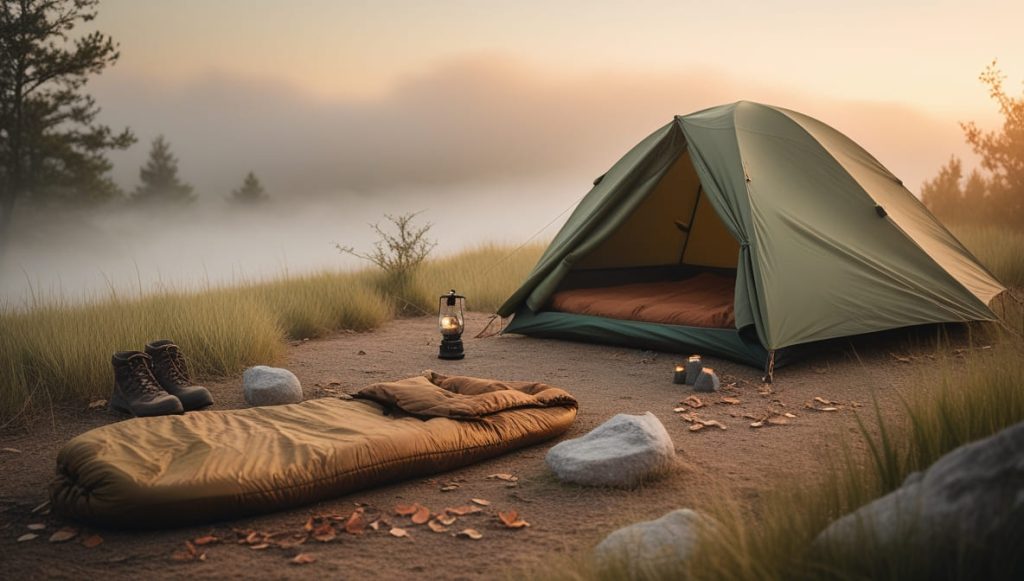
Your shelter and sleep system are the foundation of a comfortable camping trip. Here’s what you’ll need:
1. Tent
- Why It’s Important: Your tent is your home away from home. It protects you from the elements, keeps insects out, and provides a private space to rest.
- Pro Tip: Choose a tent that’s appropriate for the season and the size of your group. A 3-season tent is ideal for spring, summer, and fall, while a 4-season tent is better for winter camping.
- Recommended Product: REI Co-op Half Dome SL 3+
2. Tent Footprint or Ground Tarp
- Why It’s Important: A footprint protects the bottom of your tent from abrasions and moisture, extending its lifespan.
- Pro Tip: Make sure the footprint is slightly smaller than your tent to prevent water from pooling underneath.
3. Sleeping Bag
- Why It’s Important: A good sleeping bag keeps you warm and comfortable, even in chilly conditions.
- Pro Tip: Choose a sleeping bag with a temperature rating appropriate for the climate. For example, a 20°F bag is ideal for cool nights.
- Recommended Product: NEMO Disco 15
4. Sleeping Pad or Air Mattress
- Why It’s Important: A sleeping pad provides cushioning and insulation, making your sleep more comfortable.
- Pro Tip: Look for a pad with a high R-value (4 or above) for cold weather camping.
- Recommended Product: Therm-a-Rest NeoAir XLite
5. Pillow
- Why It’s Important: A pillow adds comfort and helps you get a better night’s sleep.
- Pro Tip: If you’re trying to save space, use a stuff sack filled with clothes as a makeshift pillow.
6. Repair Kit
- Why It’s Important: A repair kit can save your trip if your tent or sleeping pad gets damaged.
- Pro Tip: Include duct tape, seam sealer, and a patch kit in your repair kit.
Cooking and Food Supplies
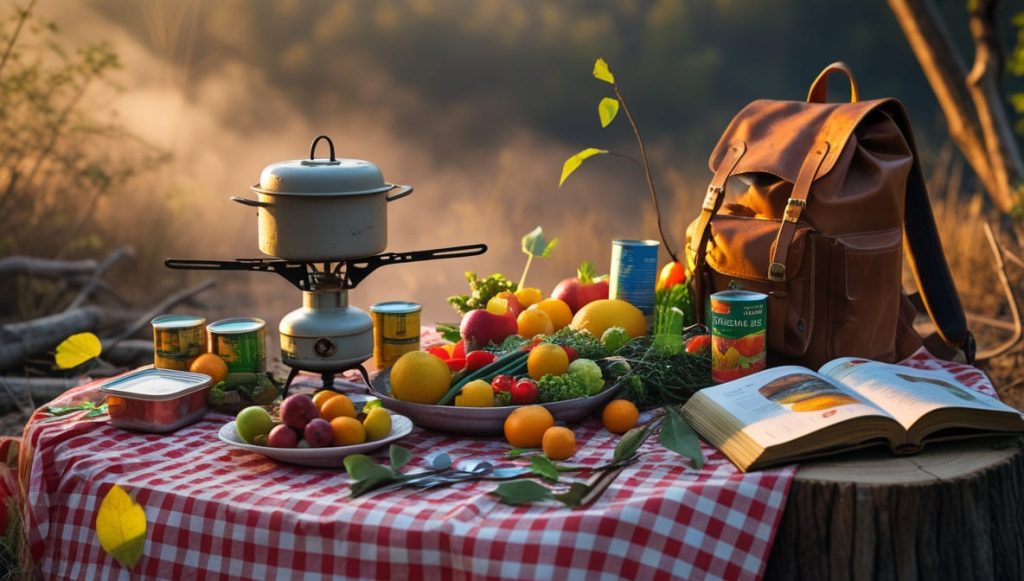
Good food is a morale booster, especially after a long day of hiking. Here’s what you’ll need to cook and eat comfortably:
7. Portable Camping Stove
- Why It’s Important: A stove allows you to cook meals and boil water, even in remote locations.
- Pro Tip: Choose a stove that’s lightweight and easy to use. Propane and butane stoves are great for beginners.
- Recommended Product: Jetboil Flash
8. Fuel for Stove
- Why It’s Important: Without fuel, your stove is useless.
- Pro Tip: Bring extra fuel in case your trip lasts longer than expected.
9. Lighter or Matches
- Why It’s Important: You’ll need a reliable way to start your stove or a campfire.
- Pro Tip: Store matches in a waterproof container.
10. Cooking Pots and Pans
- Why It’s Important: You’ll need something to cook your food in.
- Pro Tip: Choose lightweight, non-stick pots and pans for easy cleaning.
11. Utensils
- Why It’s Important: You’ll need tools to cook and eat your meals.
- Pro Tip: Bring a spatula, spoon, and knife at a minimum.
12. Plates, Bowls, and Cups
- Why It’s Important: You’ll need something to eat and drink from.
- Pro Tip: Choose durable, lightweight options like enamel or plastic.
13. Biodegradable Soap and Sponge
- Why It’s Important: You’ll need to clean your dishes to avoid attracting wildlife.
- Pro Tip: Use biodegradable soap to minimize your environmental impact.
14. Cooler with Ice or Ice Packs
- Why It’s Important: A cooler keeps perishable food fresh.
- Pro Tip: Freeze water bottles to use as ice packs—they’ll double as drinking water as they melt.
15. Food and Snacks
- Why It’s Important: You’ll need energy to fuel your adventures.
- Pro Tip: Plan your meals in advance and pack non-perishable snacks like trail mix and energy bars.
16. Water Bottles or Hydration Bladder
- Why It’s Important: Staying hydrated is crucial, especially when you’re active.
- Pro Tip: Bring at least 2 liters of water per person per day.
17. Water Filtration System
- Why It’s Important: A water filter ensures you have access to clean drinking water.
- Pro Tip: Choose a lightweight, portable filter like the Sawyer Squeeze.
18. Trash Bags
- Why It’s Important: Pack out all your trash to leave no trace.
- Pro Tip: Bring extra bags for wet or dirty clothes.
Clothing and Footwear
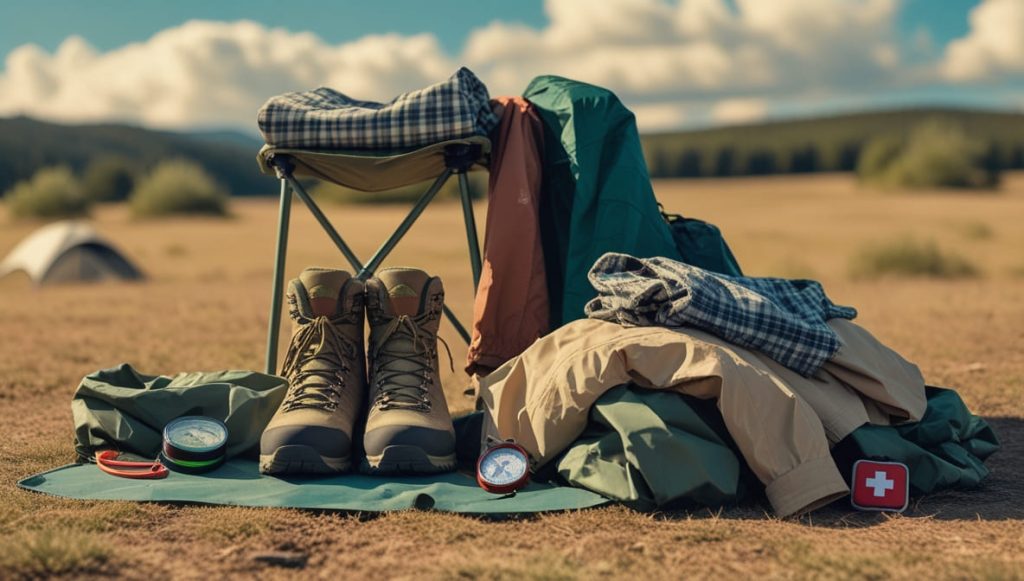
Proper clothing is essential for staying comfortable and protected from the elements. Here’s what to pack:
19. Moisture-Wicking Base Layers
- Why It’s Important: Base layers keep you dry by wicking sweat away from your skin.
- Pro Tip: Avoid cotton, which retains moisture.
20. Insulating Mid-Layers
- Why It’s Important: Mid-layers provide warmth in cooler weather.
- Pro Tip: Fleece and down jackets are great options.
21. Waterproof Outer Layer
- Why It’s Important: A rain jacket and pants keep you dry in wet conditions.
- Pro Tip: Look for breathable, waterproof materials like Gore-Tex.
22. Hiking Pants or Shorts
- Why It’s Important: Comfortable pants or shorts are essential for hiking.
- Pro Tip: Choose quick-drying, durable fabrics.
23. Comfortable Hiking Socks
- Why It’s Important: Good socks prevent blisters and keep your feet comfortable.
- Pro Tip: Bring at least two pairs of socks per day.
24. Sturdy Hiking Boots or Shoes
- Why It’s Important: Proper footwear protects your feet and provides support on uneven terrain.
- Pro Tip: Break in your boots before your trip to avoid blisters.
25. Camp Shoes
- Why It’s Important: Camp shoes give your feet a break after a long day of hiking.
- Pro Tip: Lightweight sandals or sneakers are great options.
26. Hat
- Why It’s Important: A hat protects you from the sun or keeps you warm in cold weather.
- Pro Tip: Bring a wide-brimmed hat for sun protection or a beanie for warmth.
27. Gloves
- Why It’s Important: Gloves keep your hands warm in cold weather.
- Pro Tip: Choose gloves that allow you to use your fingers for tasks like cooking.
28. Swimwear
- Why It’s Important: Swimwear is essential if you’re camping near water.
- Pro Tip: Bring a quick-drying towel too.
Lighting and Navigation
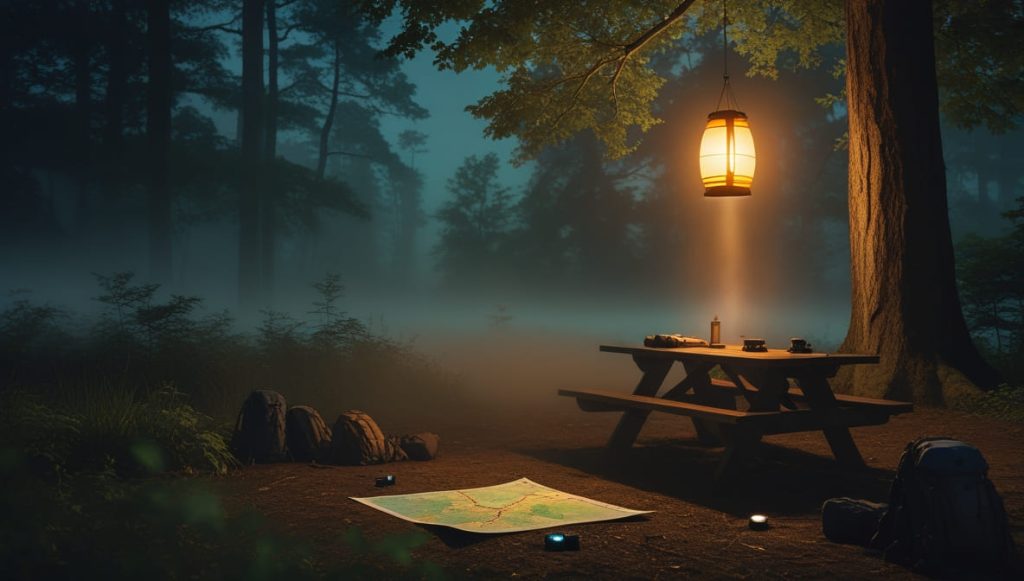
Staying safe and finding your way around the campsite requires proper lighting and navigation tools:
29. Headlamp or Flashlight
- Why It’s Important: A headlamp keeps your hands free for tasks like cooking or setting up your tent.
- Pro Tip: Bring extra batteries or a rechargeable option.
- Recommended Product: Black Diamond Spot 400-R
30. Lantern
- Why It’s Important: A lantern provides ambient light for your campsite.
- Pro Tip: Choose a lightweight, battery-powered lantern.
31. Map and Compass
- Why It’s Important: A map and compass are essential for navigation, even if you have a GPS.
- Pro Tip: Learn how to use them before your trip.
32. GPS Device or Smartphone with Offline Maps
- Why It’s Important: A GPS device or smartphone can help you navigate unfamiliar terrain.
- Pro Tip: Download offline maps in case you lose cell service.
Safety and First Aid
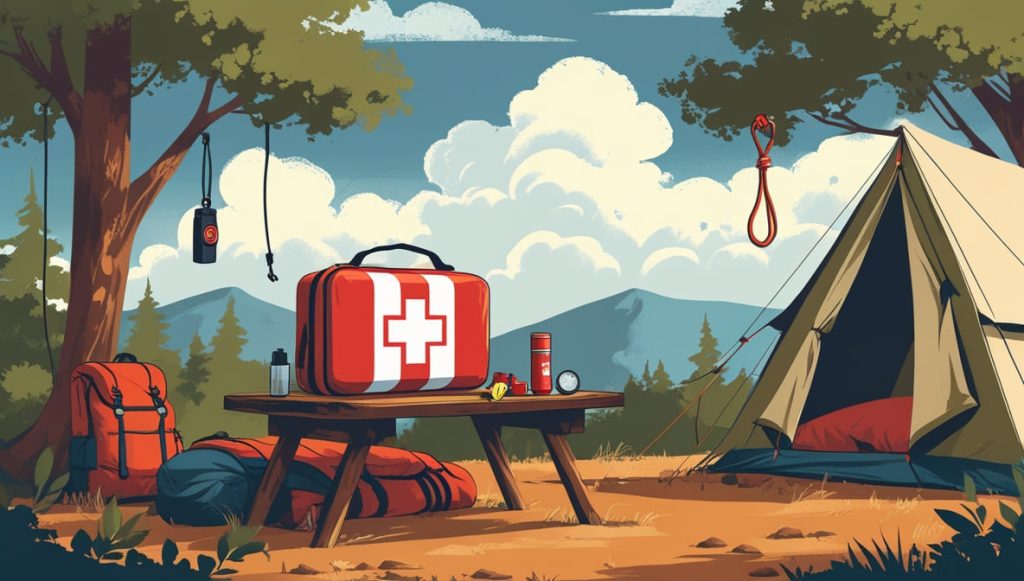
Safety should always be a top priority when camping. Here’s what you’ll need:
33. First Aid Kit
- Why It’s Important: A first aid kit is essential for treating minor injuries.
- Pro Tip: Include bandages, antiseptic wipes, pain relievers, and any personal medications.
- Recommended Product: Adventure Medical Kits Mountain Series
34. Multi-Tool or Knife
- Why It’s Important: A multi-tool is versatile and can be used for repairs, cooking, and more.
- Pro Tip: Choose a high-quality tool like the Leatherman Wave+.
35. Whistle
- Why It’s Important: A whistle can be used to signal for help in an emergency.
- Pro Tip: Attach it to your backpack for easy access.
36. Firestarter
- Why It’s Important: A firestarter can help you build a fire for warmth or cooking.
- Pro Tip: Bring waterproof matches or a ferro rod.
37. Emergency Blanket
- Why It’s Important: An emergency blanket can help you stay warm in cold weather.
- Pro Tip: Keep it in your first aid kit.
38. Bear Spray
- Why It’s Important: Bear spray is essential if you’re camping in bear country.
- Pro Tip: Learn how to use it before your trip.
39. Sunscreen
- Why It’s Important: Sunscreen protects your skin from harmful UV rays.
- Pro Tip: Choose SPF 30 or higher and reapply regularly.
40. Insect Repellent
- Why It’s Important: Insect repellent keeps bugs at bay.
- Pro Tip: Look for a repellent with DEET or picaridin.
Personal Items
Don’t forget these personal essentials:
41. Toothbrush and Toothpaste
- Why It’s Important: Good oral hygiene is important, even in the wilderness.
- Pro Tip: Use a travel-sized toothpaste to save space.
42. Biodegradable Soap and Shampoo
- Why It’s Important: Biodegradable soap minimizes your environmental impact.
- Pro Tip: Use it at least 200 feet away from water sources.
43. Quick-Dry Towel
- Why It’s Important: A quick-dry towel is lightweight and dries quickly.
- Pro Tip: Choose a compact, microfiber towel.
44. Toilet Paper
- Why It’s Important: You’ll need toilet paper for bathroom breaks.
- Pro Tip: Bring a small shovel for digging cat holes.
45. Hand Sanitizer
- Why It’s Important: Hand sanitizer helps keep your hands clean when soap and water aren’t available.
- Pro Tip: Use it before handling food.
46. Prescription Medications
- Why It’s Important: Don’t forget any medications you take regularly.
- Pro Tip: Bring extra in case your trip lasts longer than expected.
47. Sunglasses
- Why It’s Important: Sunglasses protect your eyes from UV rays.
- Pro Tip: Choose polarized lenses for better glare reduction.
48. Notebook and Pen
- Why It’s Important: A notebook is great for journaling or taking notes.
- Pro Tip: Use it to record wildlife sightings or trail conditions.
Optional but Helpful Extras
These items aren’t essential, but they can make your trip more enjoyable:
49. Camping Chair
- Why It’s Helpful: A camping chair provides a comfortable place to sit around the campfire.
- Pro Tip: Choose a lightweight, foldable chair.
50. Portable Table
- Why It’s Helpful: A portable table gives you a surface for cooking or playing games.
- Pro Tip: Look for a compact, foldable table.
51. Hammock
- Why It’s Helpful: A hammock is perfect for relaxing at the campsite.
- Pro Tip: Choose a hammock with a built-in bug net for added comfort.
52. Books or E-Reader
- Why It’s Helpful: Books are great for downtime at the campsite.
- Pro Tip: Bring a headlamp for reading at night.
53. Camera or GoPro
- Why It’s Helpful: Capture memories of your trip with a camera.
- Pro Tip: Bring extra batteries or a portable charger.
54. Binoculars
- Why It’s Helpful: Binoculars are great for wildlife spotting.
- Pro Tip: Choose lightweight, compact binoculars.
55. Games or Playing Cards
- Why It’s Helpful: Games are a fun way to pass the time.
- Pro Tip: Bring a deck of cards or a travel-sized board game.
56. Power Bank
- Why It’s Helpful: A power bank keeps your devices charged.
- Pro Tip: Choose a high-capacity power bank for longer trips.
57. Solar Charger
- Why It’s Helpful: A solar charger is a sustainable way to charge your devices.
- Pro Tip: Use it on sunny days for maximum efficiency.
58. Trekking Poles
- Why It’s Helpful: Trekking poles provide stability on uneven terrain.
- Pro Tip: Choose adjustable poles for versatility.
Tips for Using This Checklist
- Customize It: Tailor the checklist to your specific trip. For example, winter camping requires additional gear like a 4-season tent and thermal layers.
- Pack Light: Only bring what you’ll actually use. Overpacking can weigh you down and make your trip less enjoyable.
- Double-Check: Go through the checklist twice before leaving to ensure you haven’t missed anything.
- Download and Print: Save this checklist as a PDF or print it out to use as a physical reference.
With this Ultimate Camping Checklist, you’ll be ready to tackle any camping trip with confidence. Remember, the key to a successful adventure is preparation. Pack smart, stay safe, and enjoy the great outdoors!
For more camping tips and gear recommendations, check out our other articles:
